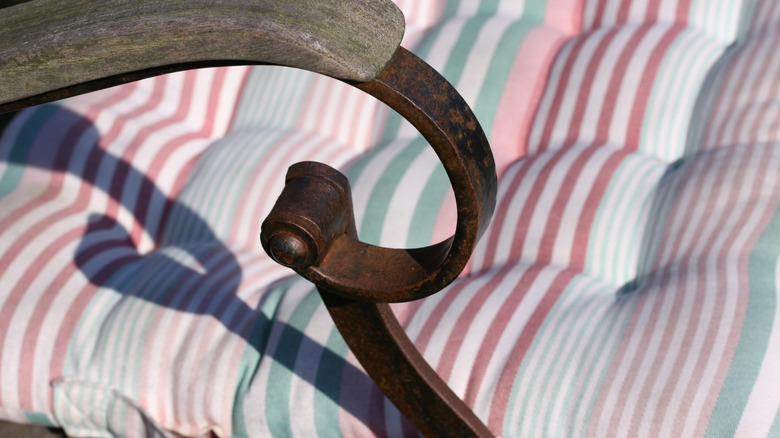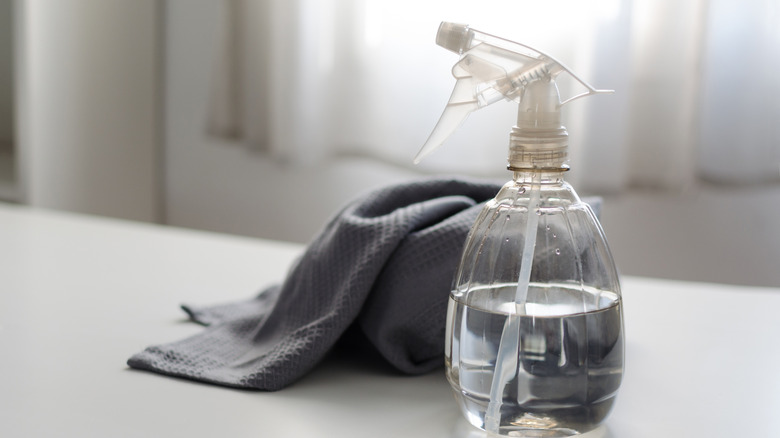Make Rusty Outdoor Furniture Look Good As New With This DIY Vinegar Hack
We may receive a commission on purchases made from links.
Quintessential backyard scenes seem to be where the magic happens — elaborate al fresco dinners lit by dim cafe lights or cozy evenings warmed by fire pits and fleece blankets. With these picturesque images in mind, you uncover the patio furniture that has been hidden away on your deck all winter, only to find that they are actually quite rusty and uninviting.
Your instinct might be to throw the coverings back on and pretend that the furniture doesn't exist. Outdoor dinner parties are overrated anyway, you try to convince yourself. But there is hope. Similar to removing rust stains from a patio, getting rid of rust on your furniture is actually quite simple and doesn't require much more than distilled white vinegar. This common household item contains anywhere between 4% and 7% acetic acid, which is the key to this DIY hack. All you need is vinegar, rags, and either a wire brush or steel wool.
Even if you're not bothered by the appearance of rust, it's still a good idea to remove it. Rust, which essentially is the result of metal meeting oxygen and moisture, is the physical evidence of corrosion. The likelihood of rust is higher if you live near the coast, as salt in the air will speed up the oxidization process. Your patio furniture may look intact and supportive now, but the rust indicates that the metal is slowly weakening.
Removing rust with vinegar
First, remove any surface-level dust and dirt from your patio furniture. Next, either spray the furniture with vinegar or wrap the rusted area with a vinegar-soaked cloth. (While you're cleaning your table and chairs, remember that a bird bath can also be washed with vinegar, in case that is on your to-do list.) Let the vinegar sit for a few hours or overnight, depending on the severity of the rusting. Afterward, use a wire brush or steel wool with a very fine grade of either 000 or 0000 to rub off the rust, which should come off easily after being treated. Hose the furniture down and wipe it thoroughly to keep rust at bay.
Now that your furniture is clean, here are some tips to prevent it from rusting again. If you've decorated the area with plants, be sure to protect your patio from water from planters. Also, regularly wipe your furniture down, because dirt and other debris can lead to rust. Weather-proof the furniture with a sealant like Jenolite Rust Shield aerosol for extra protection against corrosion. Better yet, keep the furniture completely covered from top to bottom when it's not being frequently used.
When it comes to choosing a cover, don't skimp on quality. Find a heavy-duty weather-resistant option that fits snugly and comes with latches or fasteners to keep the bottom edges from curling up and exposing the furniture. The best option, however, is to store everything indoors if you have space. Even if your furniture is covered, wipe up table and chair legs after a rainy day to make sure they're not sitting in a puddle.

